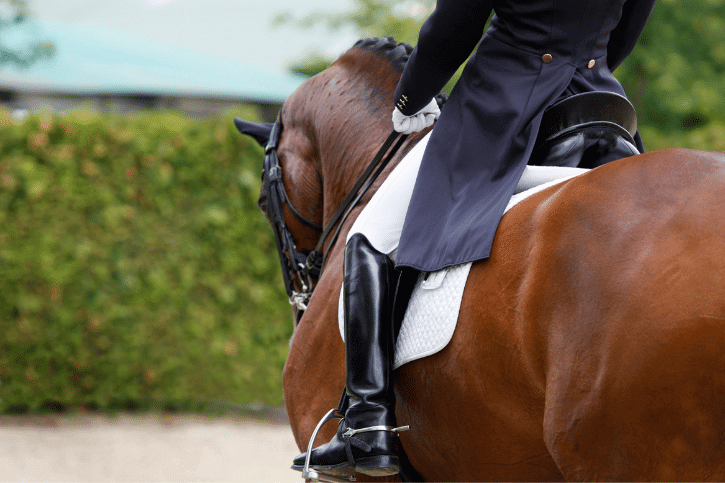How Is Dressage Scored?
I recently went to my first ever dressage show, and while I had a really enjoyable time, I have to say, I left feeling more than a little confused.
The horses were a spectacle to watch, and it was clear to see the sheer amount of training and discipline that goes into this sort of thing.
I have to say, though, that my main confusion stemmed from the scoring system!
I couldn’t understand it at all, so when I got home, I decided to look into it.
So, how is dressage scored?
Simply put, a dressage show is composed of a series of movements, each movement receiving a score out of ten. At the end of the show, the marks are added together and converted to a percentage in which the highest percentage wins.
So, it’s actually a lot simpler than you might imagine.
Obviously, this is a sport which requires experts to judge, rather than something like soccer when we can all see that a goal has been scored.
This is really the only way it might be confusing: you can’t necessarily understand the good from the bad if your eye is untrained.
So, let’s look at the question in more detail.
How is the dressage test scored?
Every dressage test contains a set of movements to be carried out by the horse.
These movements are typically assigned by the judges, as a way of gauging the full spectrum of a horse’s ability.
Judges are placed at points all around the arena, typically, so that they can always have a full view of what the horse is doing.
For every movement, the judges award the horse and rider a score out of 10, 10 being outstanding and 1 being very poor.
You can also award half marks, for example 9.5 or even 0.5.
Any error of course or test will be penalized by the subtraction first of one point on the first offense, 4 on the second offense, and elimination on the third.
When the test has concluded, the total number of good marks are divided by the total possible good marks to find the percentage.
This percentage is then subtracted from 100 to receive the score.
So, essentially, just like competitive dancing or swimming, judges keep an eye on every individual action and then use a collection of scores to give a single digit score.
So, it’s really a lot more simple than you might think!
What is the difference between a good and bad dressage score, then?
What is a perfect dressage score?
Naturally, it’s entirely possible to achieve a perfect score of 100%.
This is certainly not unheard of, although it is very rare for a few reasons.
For one thing, a judge’s view is essentially subjective, and while they have ample guidelines to go off, their own discretion is essentially being trusted.
Scores of 100% are rare, then, and this fact is borne out by what is considered to be a good score: 65%.
Anything at or above 65% is considered to be a very respectable score.
If a rider scores 65% then we may say that their average score per movement was about 6.5, which is considered somewhere between “satisfactory” and “fairly good”.
If you’re able to keep consistently at this level, you have done well.
Most accomplished dressage horses will typically achieve somewhere between 6-7 for most of their moves, and boost up their score with a few 9s and 10s.
The key is to be careful to maintain that average, and not let it slip in favor of one or two very good scores.
If you can keep your score at 65% or higher, you’ve done well.
A perfect score, as I said, would be 100%–but this is not common at all.
What is a bad dressage score?
A score of 5 is considered sufficient on any single move.
It won’t keep your average high enough to give you a good score, but it’s not terribly bad, either.
4 is considered insufficient, and anything below that is considered bad.
3 is fairly bad.
A score of 3 means that the action was not performed well, but could have been much worse.
2 is bad, but still executed, and 1 is very bad; a score of 0 means the move was not executed.
So, anything below a score of 45% is going to be considered a pretty poor score.
A bad dressage score would be in the region of 30%.
Dressage is a somewhat esoteric tradition, then, from the layman’s point of view.
The judges are highly trained and specialized in their fields to be able to give a good assessment of a horse and rider’s performance.
For the audience, they obviously are not going to have the same grasp on what each individual movement scores.
But they can easily understand the horse’s final score as an amalgamation of all these smaller scores.
